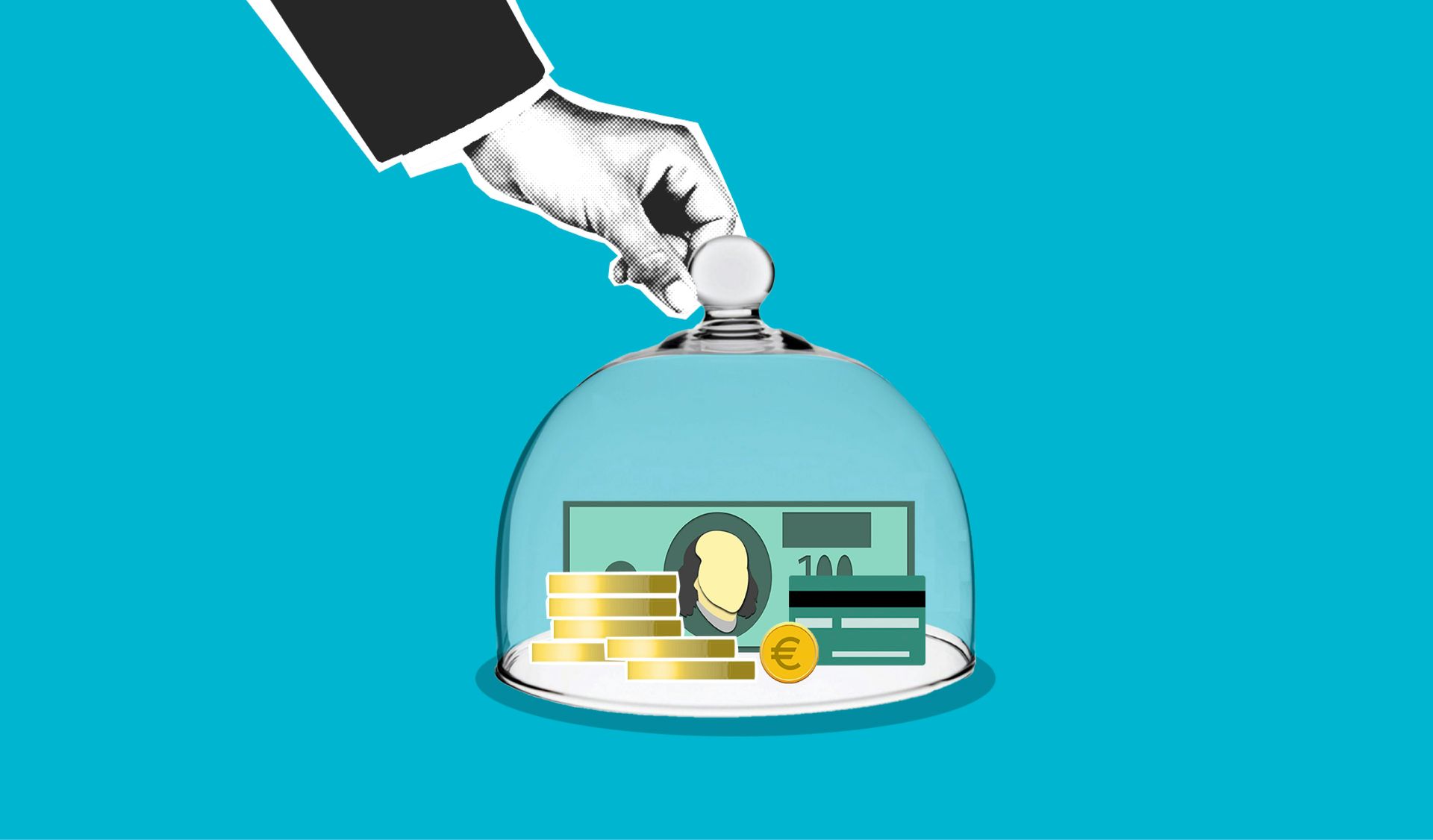
Your Guide to Smart Borrowing: Everything You Need to Know About Personal Loans
Are you considering taking out a personal loan but not sure where to start? Look no further! In this comprehensive guide, we will walk you through everything you need to know about smart borrowing and personal loans. From understanding the different types of personal loans to finding the best interest rates and repayment terms, we've got you covered.
Our aim is to empower you with the knowledge and tools to make informed financial decisions and avoid common pitfalls. Whether you are planning to consolidate your debts, fund a large purchase, or cover unexpected expenses, this guide will provide you with valuable insights and actionable tips. We understand that navigating the world of personal loans can be overwhelming, but with our expert guidance, you can take control of your financial future. So, if you're ready to unlock the power of smart borrowing and make the most of personal loans, let's dive right in!
Types of Personal Loans
Personal loans are a versatile financial tool that can be used for a variety of purposes. From debt consolidation to financing major purchases, there are several types of personal loans to consider. One of the most common types is the traditional personal loan, which is a lump-sum payment that you can use for any purpose. These loans typically have fixed interest rates and repayment terms, making them a predictable and manageable option for borrowers.
Another popular type is the debt consolidation loan, which allows you to combine multiple debts, such as credit card balances or high-interest loans, into a single, lower-interest payment. This can simplify your finances and potentially save you money on interest charges over time. For those looking to finance a specific purchase, such as a home renovation or a new car, a personal loan may be a better option than using a credit card or taking out a home equity loan. These purpose-driven personal loans often come with competitive interest rates and flexible repayment terms.
Some lenders also offer personal loans for medical expenses, which can be particularly helpful for covering unexpected healthcare costs or deductibles. These loans can provide a more affordable alternative to credit cards or payment plans offered by healthcare providers. Lastly, personal loans can be used to cover emergency expenses, such as unexpected car repairs or urgent home improvements. These types of personal loans can provide a financial safety net when you need it most, without the high-interest rates and fees associated with payday loans or cash advances.
Pros and Cons of Personal Loans
Like any financial product, personal loans come with both advantages and disadvantages that you should carefully consider before making a decision. On the positive side, personal loans offer several benefits. First and foremost, they can provide access to funds when you need them most, whether it's for debt consolidation, a major purchase, or an unexpected expense. Personal loans often have lower interest rates compared to credit cards, making them a more cost-effective borrowing option. Additionally, personal loans typically have fixed interest rates and repayment terms, which can make budgeting and financial planning easier. This predictability can be particularly helpful for those who value the stability of a fixed monthly payment.
Another advantage of personal loans is that they can help you build or improve your credit score. By making on-time payments, you demonstrate your ability to manage debt responsibly, which can positively impact your credit history and credit utilization ratio.
However, personal loans also come with some potential drawbacks. One of the primary concerns is the risk of taking on additional debt, which can be a slippery slope if not managed properly. It's crucial to carefully evaluate your financial situation and ensure that you can comfortably afford the monthly payments before committing to a personal loan.
Another potential downside is the possibility of origination fees or other hidden costs associated with the loan. It's essential to thoroughly review the terms and conditions of any personal loan offer to understand the full cost of borrowing. Finally, personal loans may not be the best option for all financial situations. For example, if you're in the midst of a financial crisis or have a poor credit history, a personal loan may not be the most suitable solution, and you may need to explore alternative options.
Factors to Consider Before Taking Out a Personal Loan
Before taking out a personal loan, it's crucial to carefully evaluate your financial situation and consider several key factors. This will help you make an informed decision and ensure that the loan aligns with your long-term financial goals. One of the most important factors to consider is your credit score and credit history. Lenders will typically use this information to determine your creditworthiness and the interest rate they're willing to offer. If you have a strong credit profile, you may be eligible for more favorable loan terms, such as lower interest rates and better repayment options.
Another crucial factor is your current and future income. Lenders will want to see that you have a stable source of income and the ability to make the monthly loan payments. Be sure to carefully assess your budget and ensure that the loan payments fit comfortably within your financial means.
The purpose of the loan is also an important consideration. Are you looking to consolidate debt, finance a major purchase, or cover an unexpected expense? Understanding the specific reason for the loan can help you determine the appropriate loan amount, repayment term, and other important factors.
Additionally, it's essential to consider the loan's interest rate, fees, and repayment terms. Compare offers from multiple lenders to ensure you're getting the best deal, and be wary of any hidden costs or penalties that could increase the overall cost of the loan.
Another factor to consider is the impact the loan may have on your credit score. While a personal loan can potentially help build your credit history, taking on too much debt or missing payments can negatively affect your credit score. Weigh the potential benefits against the risks before making a decision.
Finally, it's crucial to have a clear plan for how you will repay the loan. Consider factors such as your current debt obligations, upcoming expenses, and any unexpected financial events that could impact your ability to make the monthly payments. This will help you avoid the pitfalls of defaulting on the loan or facing financial hardship down the line.
How to Qualify for a Personal Loan
Qualifying for a personal loan can be a straightforward process, but it's important to understand the criteria lenders use to evaluate applicants. By meeting these requirements, you can increase your chances of securing a favorable loan offer. The primary factor that lenders consider is your credit score. Generally, the higher your credit score, the better the terms and interest rates you'll be offered. Lenders typically look for a credit score of 600 or higher, although some may be willing to work with borrowers with lower scores, albeit at higher rates.
Your employment and income are also crucial factors in the qualification process. Lenders want to see that you have a stable source of income and the ability to make the monthly loan payments. They may ask for documentation such as pay stubs, tax returns, or proof of self-employment income.
Another important factor is your debt-to-income (DTI) ratio, which compares your monthly debt payments to your gross monthly income. Lenders typically prefer borrowers with a DTI ratio of 35% or less, as this indicates a lower risk of defaulting on the loan. Lenders may also consider your existing assets, such as savings accounts, investments, or real estate, as these can provide additional security for the loan. Having a strong asset base can improve your chances of qualifying for a personal loan, especially if you have a lower credit score or a higher DTI ratio.
In addition to the financial criteria, some lenders may also consider other factors, such as your employment history, education, or the purpose of the loan. They may be more willing to work with borrowers who have a clear and compelling reason for the loan, such as debt consolidation or a major life event.
To increase your chances of qualifying for a personal loan, it's essential to review your credit report, address any errors or discrepancies, and work on improving your credit score. Additionally, you can explore options for co-signers or collateral, which can help offset the risk for the lender and potentially improve the loan terms.
How to Choose the Right Lender for Your Personal Loan
Selecting the right lender for your personal loan is a crucial decision that can have a significant impact on your overall borrowing experience. With a wide range of lenders and loan options available, it's important to carefully evaluate your options to find the best fit for your financial needs.
One of the first steps in choosing a lender is to consider the types of personal loans they offer. Some lenders may specialize in specific loan purposes, such as debt consolidation or home improvement, while others may have a more diverse portfolio. Determine the purpose of your loan and look for lenders that cater to your specific needs.
Next, compare the interest rates and fees charged by different lenders. Interest rates can vary widely, and even a small difference can have a significant impact on the total cost of the loan over time. Be sure to also look for any origination fees, prepayment penalties, or other hidden costs that could add to the overall expense of the loan.
The repayment terms are another important factor to consider. Lenders may offer a range of loan lengths, from 12 months to 60 months or more. Evaluate your financial situation and determine the repayment period that fits your budget best, while also considering the impact on the overall cost of the loan.
Customer service and the lender's reputation are also crucial considerations. Look for lenders with a track record of providing a positive borrowing experience, responsive customer support, and a transparent and streamlined application process. Online reviews, ratings, and referrals from friends or financial advisors can be helpful in this regard.
Additionally, consider the lender's accessibility and convenience. Some lenders may offer online application and approval processes, while others may have physical branch locations. Depending on your preferences and needs, this factor can play a significant role in your decision-making process.
Finally, be sure to read and understand the fine print of any loan agreement before signing. This includes carefully reviewing the terms, conditions, and any potential penalties or fees associated with the loan. By taking the time to thoroughly evaluate your options, you can find the right lender and personal loan to meet your financial needs.
Tips for Managing Your Personal Loan Effectively
Once you've secured a personal loan, it's important to manage it effectively to ensure a positive borrowing experience and avoid any financial pitfalls. Here are some tips to help you navigate the process successfully. First and foremost, it's crucial to make your loan payments on time every month. Late or missed payments can not only incur additional fees and penalties but can also negatively impact your credit score. Set up automatic payments or calendar reminders to ensure you never miss a due date.
If you anticipate difficulty making a payment, reach out to your lender as soon as possible. Many lenders are willing to work with borrowers who are facing temporary financial challenges, and they may be able to offer options such as deferment, forbearance, or a revised repayment plan.
It's also a good idea to make extra payments whenever possible, as this can help you pay off the loan faster and reduce the total interest paid over the life of the loan. Be sure to check with your lender about any prepayment penalties or fees before making additional payments.
Another important tip is to regularly review your loan statements and account information. This will help you stay informed about the status of your loan, the interest rate, and any changes to the terms or fees. If you notice any discrepancies or issues, address them promptly with your lender.
If you're using a personal loan for debt consolidation, be sure to close any credit card accounts or other loans that were paid off with the loan proceeds. This will help you avoid the temptation to accumulate new debt and maintain a healthy credit utilization ratio.
Finally, consider setting up a budget or financial plan that incorporates the personal loan payments. This will help you manage your overall financial obligations and ensure that the loan fits within your long-term financial goals. Remember to review and adjust your budget as needed to account for any changes in your income or expenses.
By following these tips, you can effectively manage your personal loan and ensure a positive borrowing experience that supports your financial well-being.
Common Mistakes to Avoid When Taking Out a Personal Loan
While personal loans can be a valuable financial tool, it's important to be aware of common mistakes that borrowers often make when taking out a loan. Avoiding these pitfalls can help you secure a better loan and ensure a positive borrowing experience. One of the most common mistakes is failing to shop around and compare offers from multiple lenders. It's important to take the time to research and compare interest rates, fees, repayment terms, and other loan features to find the best deal. Rushing into a loan without exploring your options can lead to higher costs and less favorable terms.
Another mistake is underestimating the cost of the loan. Borrowers may focus solely on the monthly payment, without considering the total interest paid over the life of the loan. This can result in unexpected financial strain and a higher overall cost of borrowing.
Applying for a loan that exceeds your financial capabilities is another common pitfall. Lenders may be willing to offer a larger loan amount than you need or can comfortably afford. It's crucial to borrow only what you can realistically repay, taking into account your current and future income, expenses, and other debt obligations.
Ignoring the impact on your credit score is another mistake to avoid. While personal loans can potentially improve your credit by diversifying your credit mix and demonstrating responsible debt management, taking on too much debt or missing payments can have a negative effect on your credit score.
Failing to read and understand the loan agreement is a critical mistake that can lead to unpleasant surprises down the line. Be sure to carefully review the terms and conditions, including any hidden fees, prepayment penalties, or other fine print that could impact the overall cost of the loan.
Finally, using a personal loan for frivolous or unnecessary purchases is a common mistake that can lead to financial stress and regret. Personal loans should be used for specific, well-planned purposes that align with your financial goals and priorities.
By avoiding these common pitfalls and approaching personal loans with a thoughtful and informed mindset, you can maximize the benefits of this financial tool and achieve your financial objectives.
Alternatives to Personal Loans
While personal loans can be a useful financial tool, they may not be the best solution for every situation. Depending on your specific needs and financial circumstances, there are several alternatives to consider.
One alternative is using a credit card, particularly if you have a low-interest rate and the ability to pay off the balance quickly. Credit cards can be a more flexible option for short-term financing needs, such as covering unexpected expenses or making smaller purchases.
Another alternative is a home equity loan or home equity line of credit (HELOC). These options allow you to borrow against the equity in your home, often at lower interest rates than personal loans. However, it's important to carefully consider the risks, as these loans are secured by your home.
For those with good credit, a balance transfer credit card can be an effective way to consolidate and pay off high-interest debt. These cards often offer promotional 0% APR periods, which can help you save on interest charges and pay down your debt more quickly.
If you're a homeowner, you could also consider a cash-out refinance, which allows you to refinance your mortgage and access the equity in your home. This can be a useful option for funding major expenses, such as home improvements or debt consolidation, at potentially lower interest rates than a personal loan.
For those with a stable income and a good credit history, a 401(k) loan can be another alternative to a personal loan. This allows you to borrow from your retirement savings, typically at a lower interest rate than a personal loan. However, it's essential to carefully consider the potential long-term impact on your retirement savings before pursuing this option.
Finally, if you're in a financial crisis or have a poor credit history, you may want to explore options such as debt management programs, debt consolidation services, or even seeking assistance from a nonprofit credit counseling agency. These alternatives can provide a more comprehensive approach to addressing your financial challenges.
It's important to carefully evaluate your specific needs and financial situation before deciding on the best alternative for your personal loan requirements. By exploring these options, you can find the solution that best aligns with your financial goals and priorities.
Conclusion: Making Informed Decisions about Personal Loans
In conclusion, personal loans can be a valuable financial tool, but it's essential to approach them with care and consideration. By understanding the different types of personal loans, weighing the pros and cons, and carefully evaluating the factors that impact your eligibility and loan terms, you can make informed decisions that support your long-term financial well-being.
Remember, the key to smart borrowing is to borrow only what you can comfortably afford, manage your loan effectively, and avoid common pitfalls. By following the tips and guidance provided in this comprehensive guide, you can unlock the power of personal loans and use them as a strategic tool to achieve your financial goals.
Whether you're looking to consolidate debt, finance a major purchase, or cover unexpected expenses, personal loans can be a viable option. However, it's crucial to explore all of your alternatives and choose the solution that best fits your unique financial situation.
By taking the time to educate yourself and make informed decisions, you can navigate the world of personal loans with confidence and take control of your financial future. So, if you're ready to embark on your smart borrowing journey, let's get started!

*Disclaimer: Brand Street Agency is authorized to use goPeer's trademarks and branding solely for marketing purposes related to goPeer’s loan products with prior written consent from goPeer. goPeer Corporation and its affiliates are not responsible for any content, statements, or representations made by Brand Street Agency on this website. Loan approvals are not guaranteed and are subject to goPeer's underwriting policies. Terms and conditions apply. For the most accurate and up-to-date information regarding goPeer’s loan products, please visit goPeer's official website (https://gopeer.ca). Brand Street Agency operates as an independent entity and is not an employee, representative, or affiliate of goPeer Corporation or its affiliates. Brand Street Agency may receive compensation for its services.
goPeer offers unsecured personal amortizing loans throughout Canada in amounts from $1,000 to $35,000 with terms of 3 or 5 years and Annual Percentage Rates (APR) between 8.99% and 34.99%, depending on an assessment of the borrower’s credit profile, financial position, and ability to service the loan. If a payment is unsuccessful, goPeer may charge an unsuccessful payment fee of $50. If a payment is late 30 or more days, goPeer may charge a late payment fee of $25 or 5% of the payment due, whichever is greater. goPeer charges an origination fee included in the advertised APR. There are no other fees on loans. Loans are subject to credit and underwriting approval and lending rules may vary by province. For example, the average borrowing cost paid on a $9,400 unsecured personal loan at an APR of 18.8%, with a 5-year term and bi-weekly payments of $104.80 is $4,794.49.














